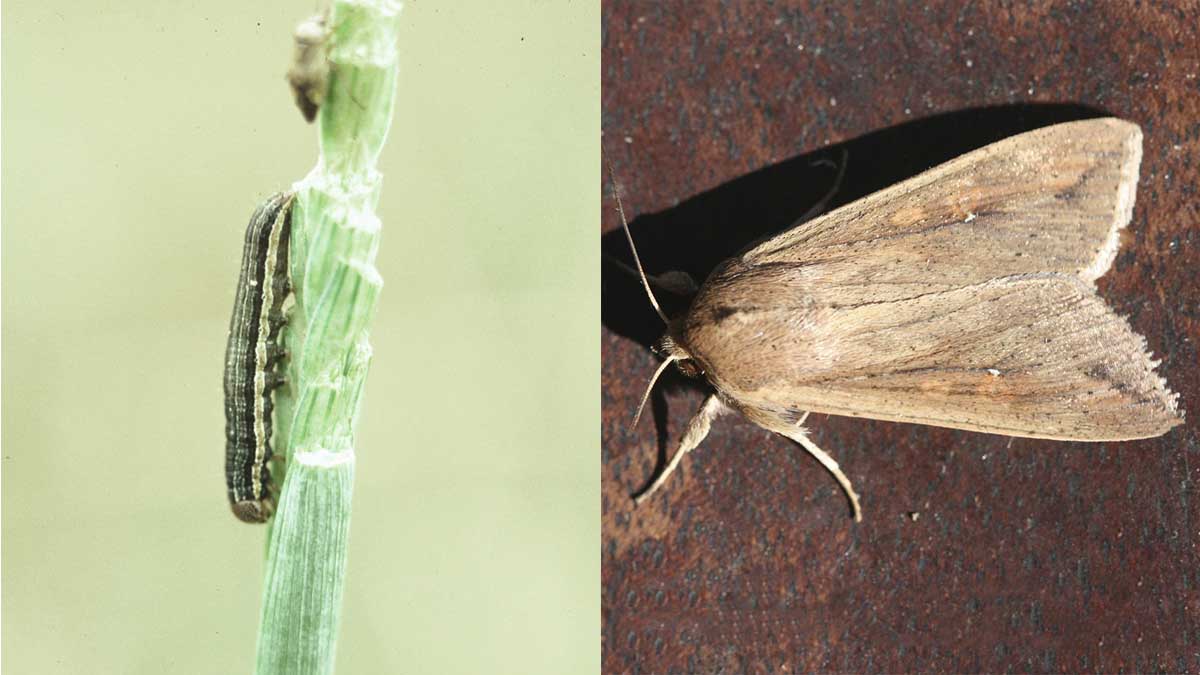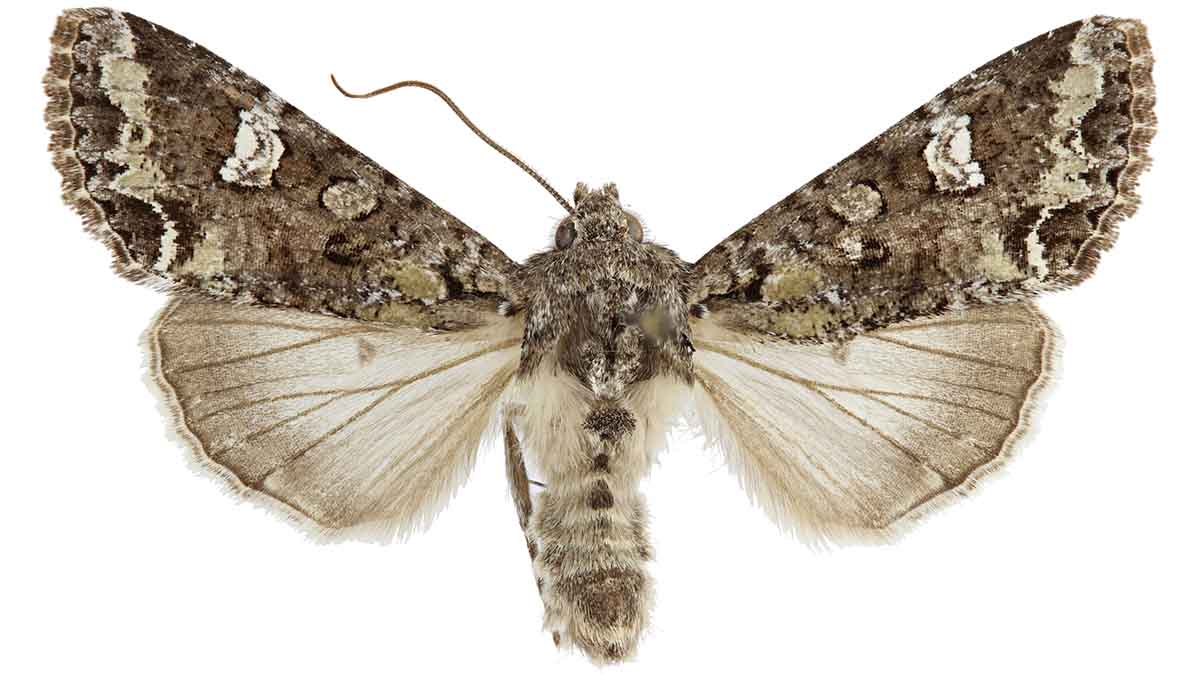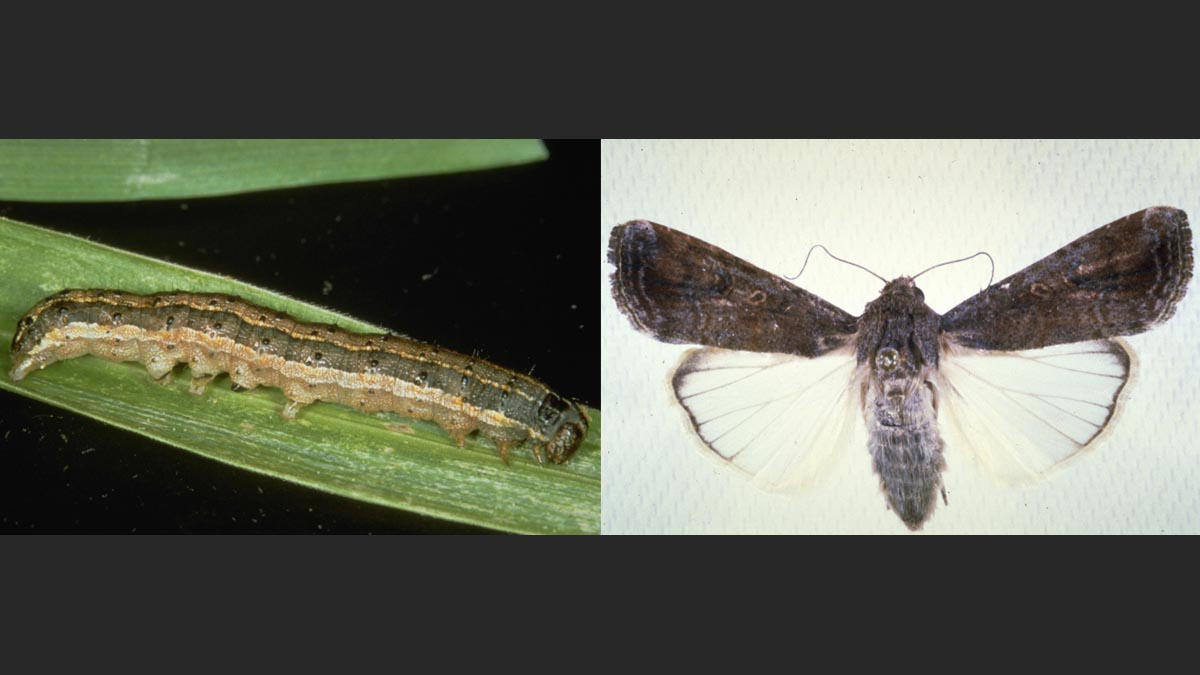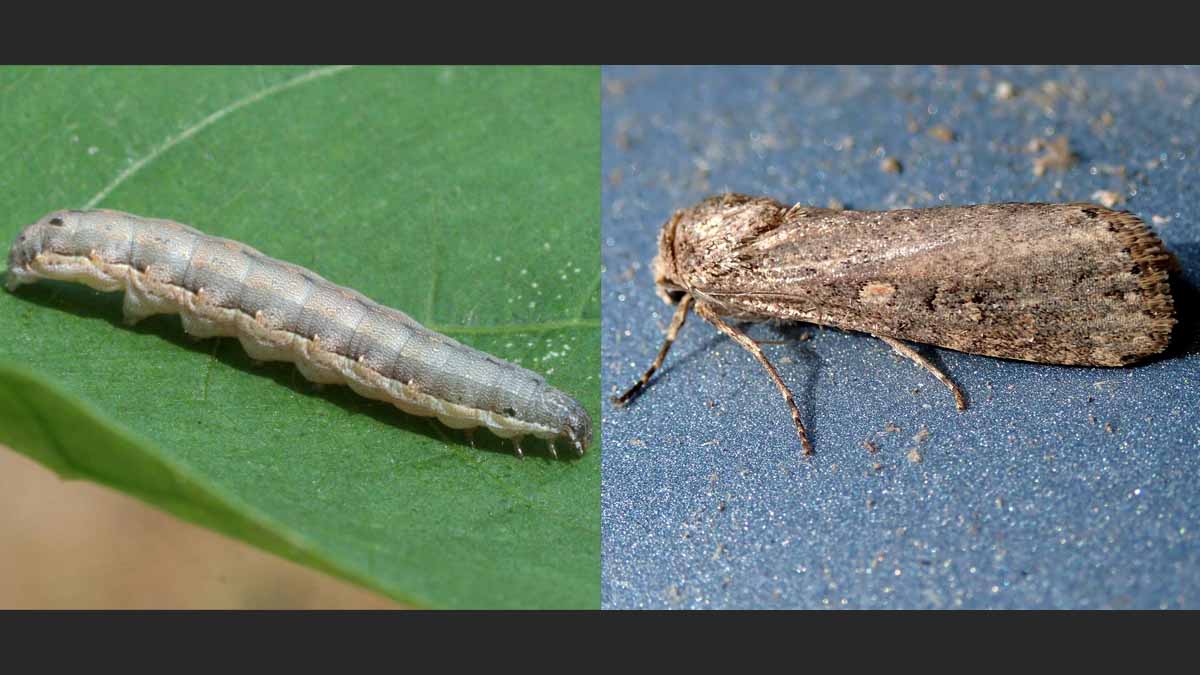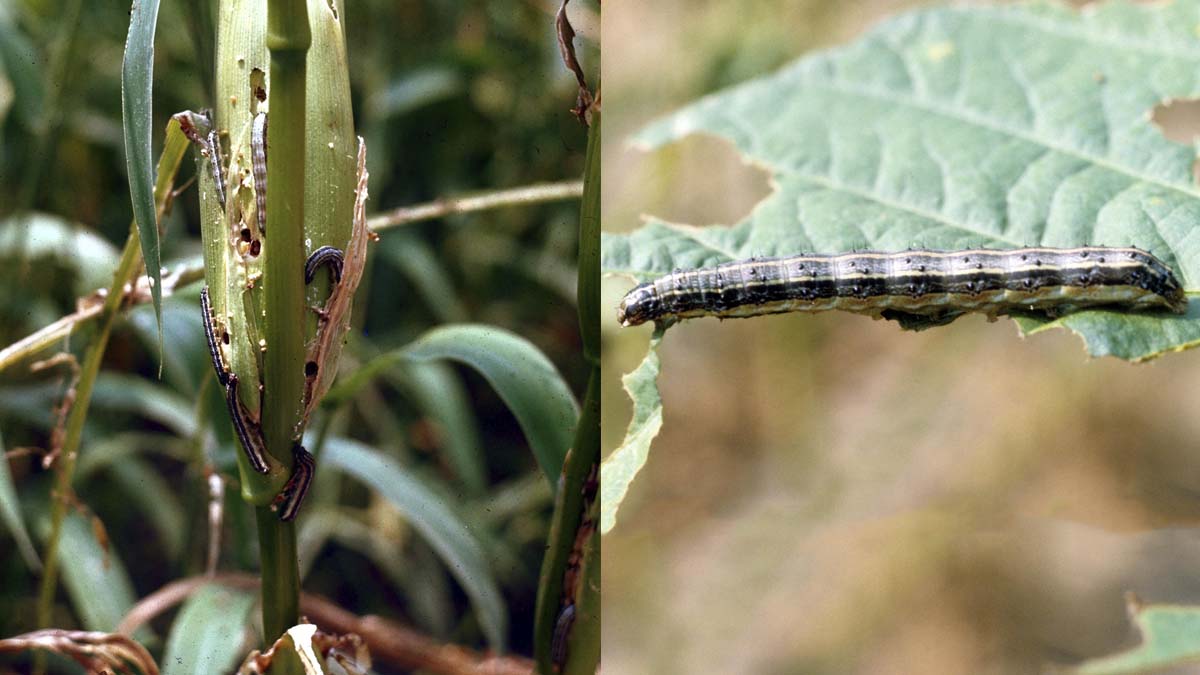Armyworms
Pest Common Name
- Armyworm (Mythimna unipuncta)
- Western Yellowstriped Armyworm (Spodoptera praefica)
- Bertha Armyworm (Mamestra configurata)
- Fall Armyworm (Spodoptera frugiperda)
- Beet Armyworm (Spodoptera exigua)
- Many others
- Crops: alfalfa (seed and hay), cereals, corn, potato, pulses (green and dry), sugar beet, hops, mint, others
- Fruits and vegetables: apple, pears, onions, leafy greens, tomato, others
- Landscape, ornamentals and turfgrass
Adult armyworms generally are mottled grey and brown moths, with wingspans ranging from 1-1 3/4 in (25-45 mm). Larvae (caterpillars) vary widely in color, from light tan to green to dark brown, and range in length from 1/32-1 3/4 in (1-44 mm), depending on the species and the stage. Larvae are generally smooth, with three pairs of legs near the head and five pairs of fleshy leg-like appendages near the posterior end. Most species have between six and nine larval growth stages (instars). Eggs are usually laid in clusters and vary widely in color depending on the species. Figures 1-4.




Biology
Armyworms overwinter as pupae in the soil. Adults emerge anywhere between March and July, depending on the species, to mate and lay eggs. Just-hatched larvae are tiny, but often remain in groups near the egg mass, and can skeletonize leaves or completely defoliate small seedlings. As they grow larger, they disperse within the same plant or travel to new host plants. In many species, larvae are nocturnal, feeding on foliage during the night, and at rest in cracks and crevasses in the soil during the day. Depending on the species, larvae may be of concern anywhere between July through early October.
There are generally one to three generations per growing season.
Damage
Armyworms feed on plant leaves, stems and sometimes on below-ground tissue such as upper roots or tubers when they are exposed or can be accessed through cracks in the soil (Figure 5). Damage to young shoots can be severe, with armyworms capable of completely defoliating the plant or severing the stem. In more mature plants, leaves can have rough, irregular holes or be completely skeletonized. Larvae can also bore into ears of corn and heads of leafy greens.

Monitoring
Some armyworms, notably fall, bertha and beet armyworm, can be monitored with pheromone-baited traps starting around June. Keep in mind that pheromones target specific species, so consider what species are most likely to be problematic when selecting a lure. Larvae can also be monitored using a beat sheet or sweep net, though keep in mind that many species only actively feed during the night.
Very few crops have formal economic treatment thresholds established for armyworms. When deciding if treatment is warranted, check the PNW Pest Management Handbooks website to see if guidelines exist. If no formal threshold exists, consider the vulnerability of the crop and the likelihood and severity of damage. For instance, while most vegetables are rarely attacked by most armyworm species, corn is often attacked and can sustain severe damage. Also consider that older plants can usually tolerate much more damage than younger plants before any economic damage is sustained.
Management
Primary Management Tactics
Armyworms are generally held in check by natural enemies, and insecticides should only be considered when infestations and defoliation are severe, or plants are in a highly vulnerable stage.
Biological
- Avoid using broad-spectrum insecticides to conserve natural enemies of armyworm, such as big-eyed bugs (Geocoris), damsel bugs (Nabis), and many species of ground beetle (Carabidae), rove beetle (Staphylinidae) and parasitic wasps and flies
- Many fungal pathogens are naturally occurring in the field and hold populations in check
- There are multiple biological insecticides (e.g., Bt and spinosad available, see the PNW Pest Management Handbooks website for more information
Chemical
- Armyworms are generally held in check by natural enemies, and insecticides should only be considered when infestation and defoliation are severe
- Foliar sprays are most effective at night when most larvae are actively feeding
- Recommendations for pesticides to use in the management of armyworms can be found on the PNW Pest Management Handbooks website
Pesticide Warning
Always read and follow the instructions printed on the pesticide label. The pesticide recommendations in this University of Idaho webpage do not substitute for instructions on the label. Pesticide laws and labels change frequently and may have changed since this publication was written. Some pesticides may have been withdrawn or had certain uses prohibited. Use pesticides with care. Do not use a pesticide unless the specific plant, animal or other application site is specifically listed on the label. Store pesticides in their original containers and keep them out of the reach of children, pets and livestock.
Trade Names — To simplify information, trade names have been used. No endorsement of named products is intended nor is criticism implied of similar products not mentioned.
Groundwater — To protect groundwater, when there is a choice of pesticides, the applicator should use the product least likely to leach.
- Figure 1 (left). Ronald Smith, Auburn University, Bugwood.org
- Figures 1 & 4 (right). Whitney Cranshaw, Colorado State University, Bugwood.org
- Figure 2. Hanna Royals, Screening Aids, USDA APHIS PPQ, Bugwood.org
- Figure 3. Billy R. Wiseman, USDA Agricultural Research Service, Bugwood.org
- Figure 4 (left). Russ Ottens, University of Georgia, Bugwood.org
- Figure 5 (left). University of Georgia, Bugwood.org
- Figure 5 (right). John C. French Sr., Retired, Universities: Auburn, GA, Clemson and University of Missouri, Bugwood.org
Desiree Wickwar, Entomologist, IPM Project Manager
2023







